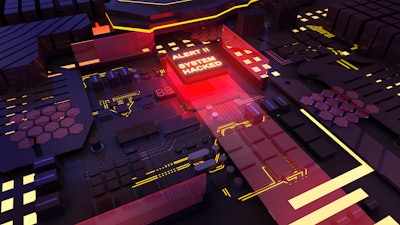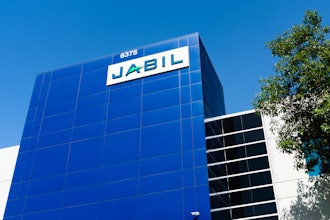
The manufacturing industry is increasingly vulnerable to cyber threats in today's interconnected world. With the integration of advanced technologies and the rise of Industry 4.0, manufacturing operations have become a prime target for cybercriminals. To combat these threats, manufacturers must adopt targeted cybersecurity measures. Managed detection and response (MDR) is emerging as a critical strategy to enhance cybersecurity in the manufacturing sector.
Manufacturing environments are complex, with a mix of IT (Information Technology) and OT (Operational Technology) systems. OT systems control physical processes and machinery, making them integral to manufacturing operations. However, these systems often lack the same security measures found in IT environments, leaving them vulnerable to cyber threats.
One of the primary challenges in manufacturing cybersecurity is the dynamic nature of OT security. Unlike traditional IT systems, OT devices are often not compatible with most modern security protections, such as endpoint detection and response. Also, this equipment usually has long lifecycles, during which they are infrequently updated. This creates a moving target for cybersecurity professionals who must continually adapt their strategies to protect these critical assets.
This often facilitates the need for specialized security solutions catering to OT environments' unique requirements. Traditional IT security measures may not be sufficient to protect OT systems, necessitating specialized tools and technologies targeted specifically at OT device traffic and vulnerabilities.
The Financial Impact
Cyberattacks can have devastating financial consequences for manufacturing companies. The direct costs alone can be staggering, including ransom payments, production downtime, and equipment replacement. An IBM study found that the average cost of a data breach in the industrial sector was $4.73 million in 2023. Indirect costs, such as reputational damage and loss of customer trust, can be even more detrimental in the long run.
The manufacturing industry is particularly vulnerable to cyber threats due to its reliance on OT systems. These systems, which control physical processes and machinery, often lack robust security measures and can be exploited by cybercriminals. In 2023, nearly 70 percent of industrial firms experienced an OT cyberattack, and 25 percent were forced to shut down operations for a period of time.
Given the substantial financial consequences of cyberattacks, manufacturers are turning to advanced cybersecurity solutions such as MDR to protect their operations.
MDR offers a more proactive approach to cybersecurity, providing continuous monitoring, threat detection and rapid response capabilities. In the manufacturing sector, MDR can significantly enhance the security of both IT and OT systems. One key advantage of MDR is its ability to integrate with OT security measuresby deploying specialized OT security products tailored to the unique needs of manufacturing environments, providing real-time visibility into potential security threats.
By correlating OT device logs with curated threat intelligence and vulnerability information, MDR solutions can detect and respond to threats more effectively. This targeted approach ensures that manufacturers are more protected against both known and emerging threats, safeguarding their operations and sensitive data.
Moreover, MDR's proactive approach is more cost-effective than reacting to incidents after they occur. Manufacturers can avoid the substantial costs associated with successful attacks by identifying and addressing vulnerabilities before they can be exploited.
MDR Implementation
To effectively leverage the benefits of MDR, manufacturers must understand the key steps involved in its implementation process. The process begins with a thorough risk assessment, identifying the company's infrastructure's unique cybersecurity challenges and vulnerabilities. This assessment informs the development of a tailored MDR solution that addresses specific security needs.
One significant advantage of MDR is its non-disruptive implementation. MDR solutions are typically passive and out-of-band, meaning they do not interfere with normal network operations. This allows manufacturing companies to enhance their cybersecurity posture without experiencing downtime or operational disruptions.
The implementation process also involves continuous monitoring and threat detection. MDR providers use advanced analytics and machine learning to identify potential security incidents in real time. By mirroring traffic and analyzing logs from OT devices, they can detect and respond to threats before they cause significant damage.
Consider the recent case of Bosch Rexroth, a major supplier of industrial tools. In January 2024, researchers uncovered over 25 vulnerabilities in the company's smart nutrunners, (covered in detail on an episode of the Security Breach podcast) used extensively in automotive manufacturing. Exploiting these flaws, attackers could halt production lines or subtly alter tool settings to sabotage product quality. The resulting delays, recalls and reputational damage could be devastating.
This is where MDR solutions prove their worth. By continuously monitoring OT devices and security products in combination with other network log sources for anomalous behavior and rapidly responding to threats, MDR can catch attacks early to minimize disruption and losses. In the Bosch Rexroth scenario, an MDR provider's advanced analytics would detect the subtle signs of compromise, enabling the manufacturer to secure the affected tools before any harm is done.
Ensuring Cybersecurity Compliance
Manufacturers face a complex web of cybersecurity regulations and standards. These include industry-specific guidelines like the NIST Cybersecurity Framework for critical infrastructure and broader regulations like GDPR for data privacy. Non-compliance can result in hefty fines, legal liabilities and reputational damage.
MDR providers are well-versed in the various compliance requirements and can assist in identifying applicable regulations based on the company's operations and sector. Through gap analysis and risk assessments, MDR helps manufacturers identify areas where their current practices fall short of regulatory standards. This enables targeted remediation efforts to address vulnerabilities and ensure compliance.
MDR solutions also provide the necessary monitoring, logging and reporting capabilities to demonstrate compliance to auditors and regulators. They also stay up-to-date with evolving regulations and can guide manufacturers in adapting their security measures accordingly.
As manufacturing continues to evolve, so does the cybersecurity landscape. Cyber threats are becoming more sophisticated, and manufacturers must adopt advanced security measures to stay ahead. MDR offers a scalable and flexible solution that can adapt to the changing threat environment.
By providing continuous monitoring and leveraging global threat intelligence, MDR ensures that manufacturers are more protected against both known and emerging threats. This approach to OT cybersecurity is essential for safeguarding manufacturing operations and maintaining business continuity.
Moreover, MDR's ability to integrate with IT and OT environments makes it an indispensable component of a robust cybersecurity strategy. Manufacturers that adopt MDR can ensure their operations are as protected as possible against cyber threats, enabling them to focus on their core business activities with confidence.
Jeremy Herzog is the Director of Engineering at Nuspire.






















